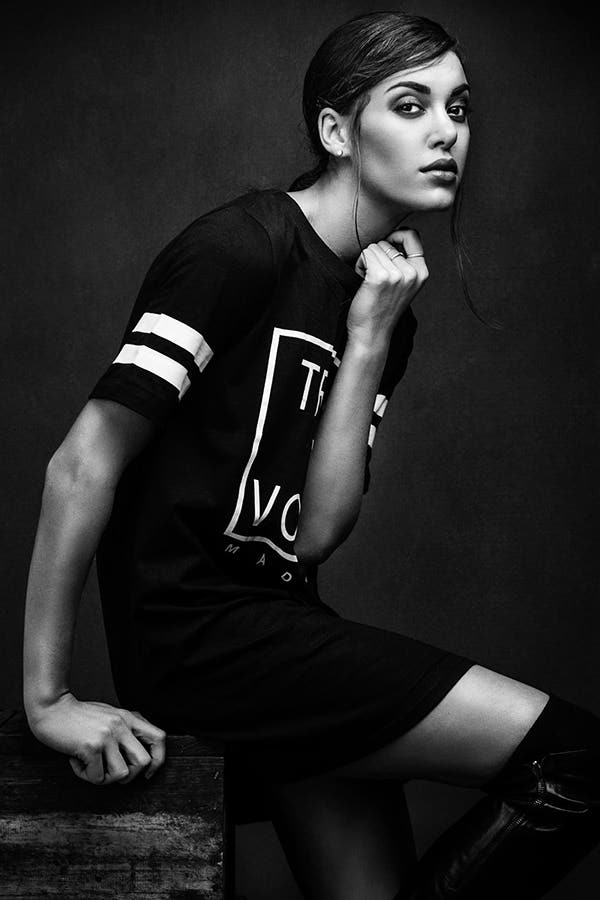Being Photographed Made Me a Better Photographer
It’s easy to tell someone to be brave until you’re standing in their shoes.
Being photographed is an unnerving experience, as I discovered during a recent photography session, where I was the subject. All of a sudden I was the one who had to perform and all my bravado leached away.
Despite the photographer being friendly and experienced, feeling what it was like to be the subject helped me realise what I needed to be doing better as a photographer.
As photographers, we want to create strong images and this requires us to help our subjects appear engaged and natural. Studio photography has its own obstacles compared to shooting on location; standing in a bare room with very little to work off. It was in this situation that I had my photograph taken. I wanted to look good but at that moment, with the lens pointed at me, I didn’t know how...
My legs stiffened, my arms felt like they just got in the way and my movements felt awkward. When I thought I was pulling a cool, steely face I realised, in reality, I just looked grumpy and bored. Due to the lack of context in the studio, I felt lost and out of place.




1: Visualise Your Surroundings
What helped was giving myself a scenario to operate from. I visualised what I was looking at and how I was responding to it. This created more comfortable and interesting expressions. Thinking about what I was trying to communicate allowed me to convey more natural movements and poses. As a photographer, directing someone this way has yielded some wonderful and surprising results. My subjects have come up with striking and memorable expressions that I would never have been able to describe to them.
Giving instructions in terms of story or scenes, like imagining yourself in a fight, or accepting an award, allows the person to naturally discover their own poses, where their body and face work together.
2: Set the Mood
Creating my own mood wasn’t always easy, so playing music was also useful during my photo session. Just hearing the camera click was really distracting and it took me out of the moment. Killing that silence and having my favourite music play, enjoying the beat, encouraged me to move. Along with a few well placed jokes, working with music also made the shoot feel less serious and more fun, helping again in being more natural and expressive.
Music alone doesn't always offer ideas for poses. Creating a mood board, a collection of inspirational images, helps the subject see and understand what looks and “moods” you as the photographer are trying to create.
3: Communicate Constantly
As the subject, I needed feedback. It was really useful to be told what was working and, in a nice way, what wasn’t. Posing tips gave me confidence in what I could offer as the subject. These tips could be something as simple as relaxing your jaw, turning your head or shifting your feet. I couldn’t see myself so hearing these things guided me and made me more confident and willing to try more interesting poses. It also made me feel like I was being captured in a more flattering way.
Many models I’ve worked with have told me that they have appreciated my guidance during their shoot, the most awkward shoots they've been part of are where the photographer offers no feedback. They were met with silence and had to resort to hoping they were doing the right thing. So it’s worth remembering that our lack of communication, even though we think things are working well, can cause your subject to doubt themselves and become timid. Take every opportunity to say positive things, laugh with them and be engaged with what your subjects are doing.




4: Whatever You Do, Don’t Do Nothing
If you haven’t done so recently, spend some time in front of the camera. Get the feeling of what it’s like to stare into an empty space and be expected to “look good”. Get to know how your own body moves and what you find helpful in direction. Get to know that awkward feeling of being expected to move as this will help you develop the right tone and techniques to guide your subjects. As your own posing improves, it will help when you physically demonstrate to your subject how you want them to pose. Seeing an action made is much more helpful than just verbally describing it.
As a good photographer, you have to do more than just press the shutter button. Not all the people we photograph will be professional models who spend their days striking poses. Most people we photograph will start off feeling nervous or lost during a shoot, but guaranteed, they all want their photos to look great.
Being photographed is not a natural experience, so the more we guide our subjects, encourage and assist them, the better the result will be for everyone.


More from our Masters
Whether you are searching for more insider advice and expert tips from Jason Lau or any of our other Masters, don't forget to keep checking back on our Photography Blog. To become your own Master of photography, shop online or head into your local Ted's store today.
Next Post
Why Telephoto Lenses Aren’t Just for “Zooming”
Previous Post
Tracking Snow Leopards with Andrew Peacock
